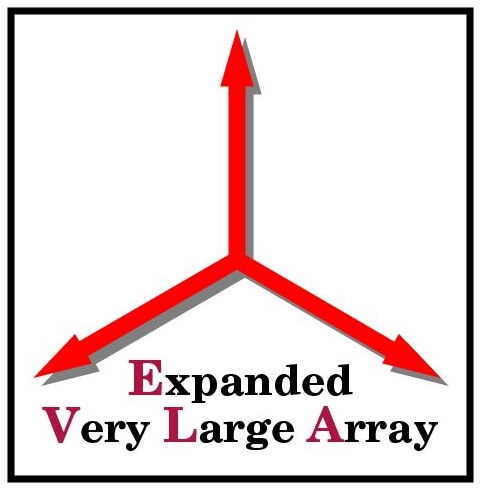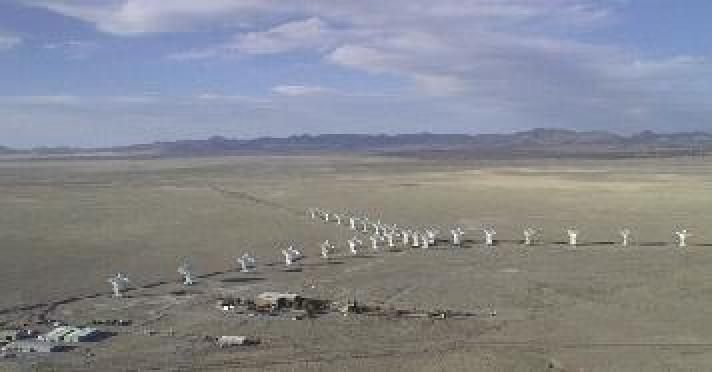The Expanded VLA Project

|
The Expanded Very Large Array Project:
A Radio Telescope to Resolve Cosmic Evolution
Phase I
|
 |
|
Measuring the three-dimensional structure of the Sun's magnetic field
Mapping the changing structure of the dynamic heliosphere
Measuring the rotation speed of asteroids
Observing ambipolar diffusion and thermal jet motions in young stellar objects
Measuring three-dimensional motions of ionized gas and stars in the center of the Galaxy
Mapping the magnetic fields in individual galaxy clusters
Conducting unbiased searches for redshifted atomic and molecular absorption
Looking through the enshrouding dust to image the formation of high-redshift galaxies
Disentangling starburst from black hole activity in the early universe
Providing direct size and expansion estimates for up to 100 gamma-ray bursts every year
|
Sensitivity:
Continuum sensitivity improvement
by up to a factor of 5 (below 10 GHz) to more than 20 (between 10 and 50
GHz).
Frequency Accessibility:
Operation at any frequency between
1.0 and 50 GHz. Two pairs of signals, each pair with opposite polarizations up to
4 GHz bandwidth, making a total available bandwidth of 8 GHz at each polarization, and
independently tunable at any frequency within any given band.
Spectral Capabilities:
The WIDAR correlator will provide many frequency
channels (minimum of 16,384, up to 262,144), process the wide bandwidths, and give frequency
resolution better than 1 Hz if necessary.
Operational Changes:
Phase I will provide dynamical scheduling: observing
blocks will be scheduled on the basis of weather, array configuration, and science. "Default"
images will be routinely and automatically produced for all observing programs, and be made
available to users.
Phase I - Technical Advances
Wideband receiver systems
State-of-the-art, flexible correlator
Fiber-optic data transmission system
New digital electronics
New powerful on-line control system
|


